Abstract
To decrease the time and cost of processing urine cultures, we devised a critical pathway to identify and perform antibiotic susceptibility tests on commonly isolated microbial pathogens within 6 h of growth detection. The strategy was based on eliminating expensive kits and automated procedures when not required. A pathway utilizing a statistical matrix and three rapid biochemical tests required to identify the most common pathogen, Escherichia coli, was developed. This species, which represented 82% of urinary isolates, was identified in 1 h for less than 10% the cost of a commercial kit. The specificity of the 1-h E. coli identification battery was greater than or equal to 99.9% with a sensitivity of 93%. In addition, this critical pathway, adapting published methods, permitted the identification of other enteric pathogens, the group D streptococci, and Pseudomonas aeruginosa within 4 to 6 h. Furthermore, it accounted for other microbes that required longer periods of incubation. The pathway also included a rapid disk diffusion sensitivity test. Utilizing the critical pathway strategy, 76% (E. coli frequency of 0.82 X E. coli sensitivity of 0.93) of all urinary pathogens were identified within 1 h, and 98% were identified within 4 h with an antibiotic sensitivity test available within 6 h after the observation of growth. Costs were reduced from 2.5 to 5.0 times. This methodology is applicable to other specimen types.
Full text
PDF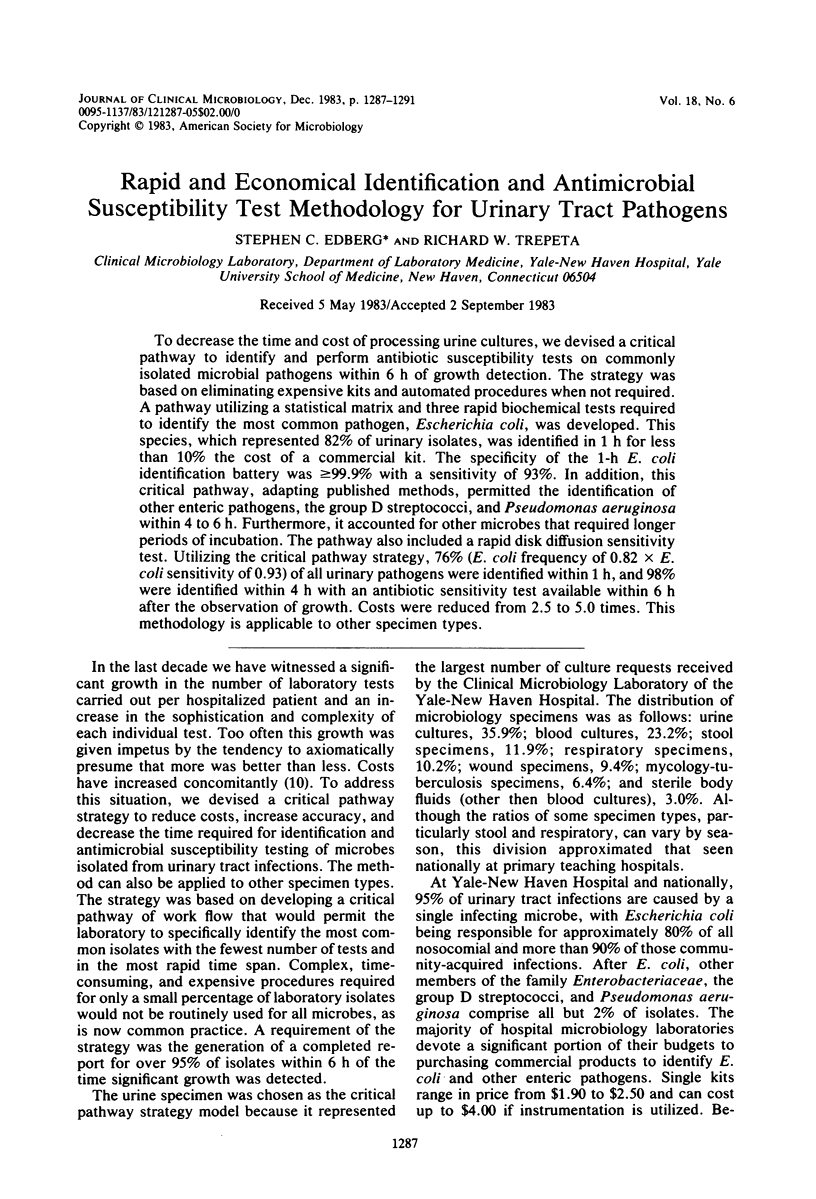
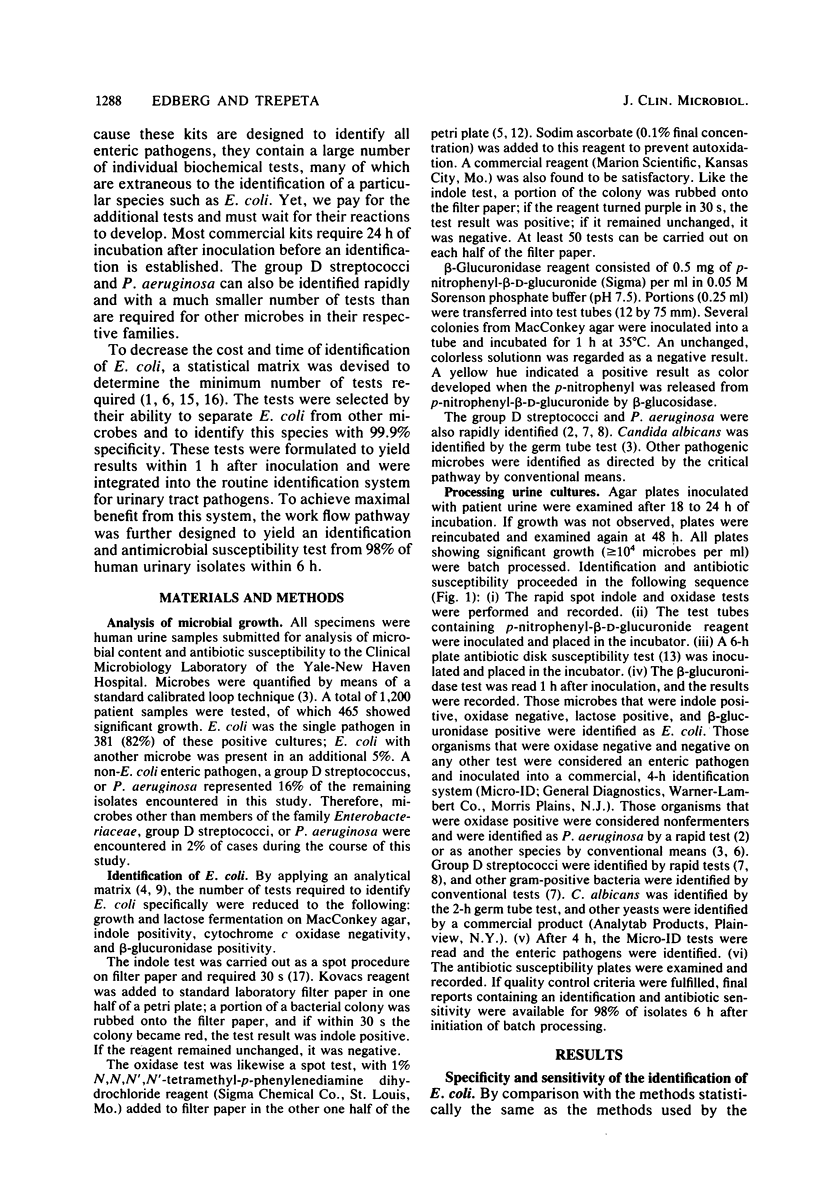
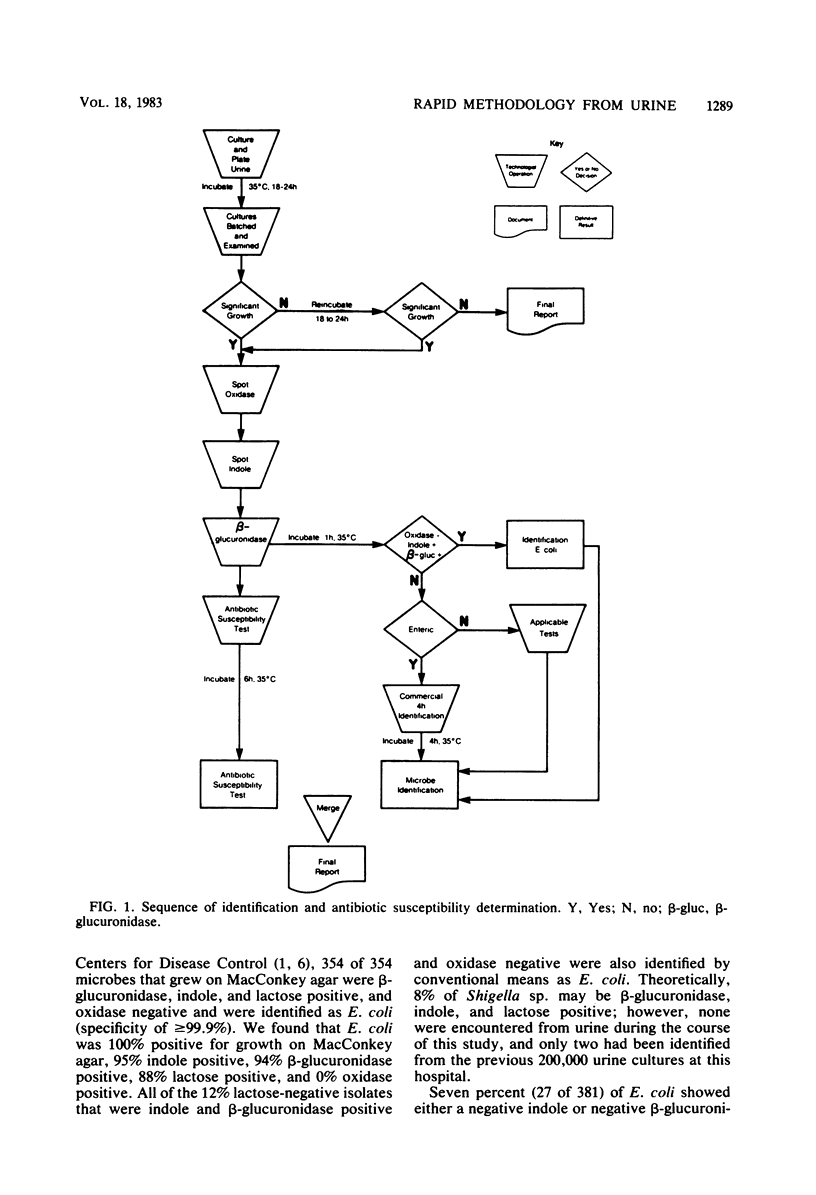
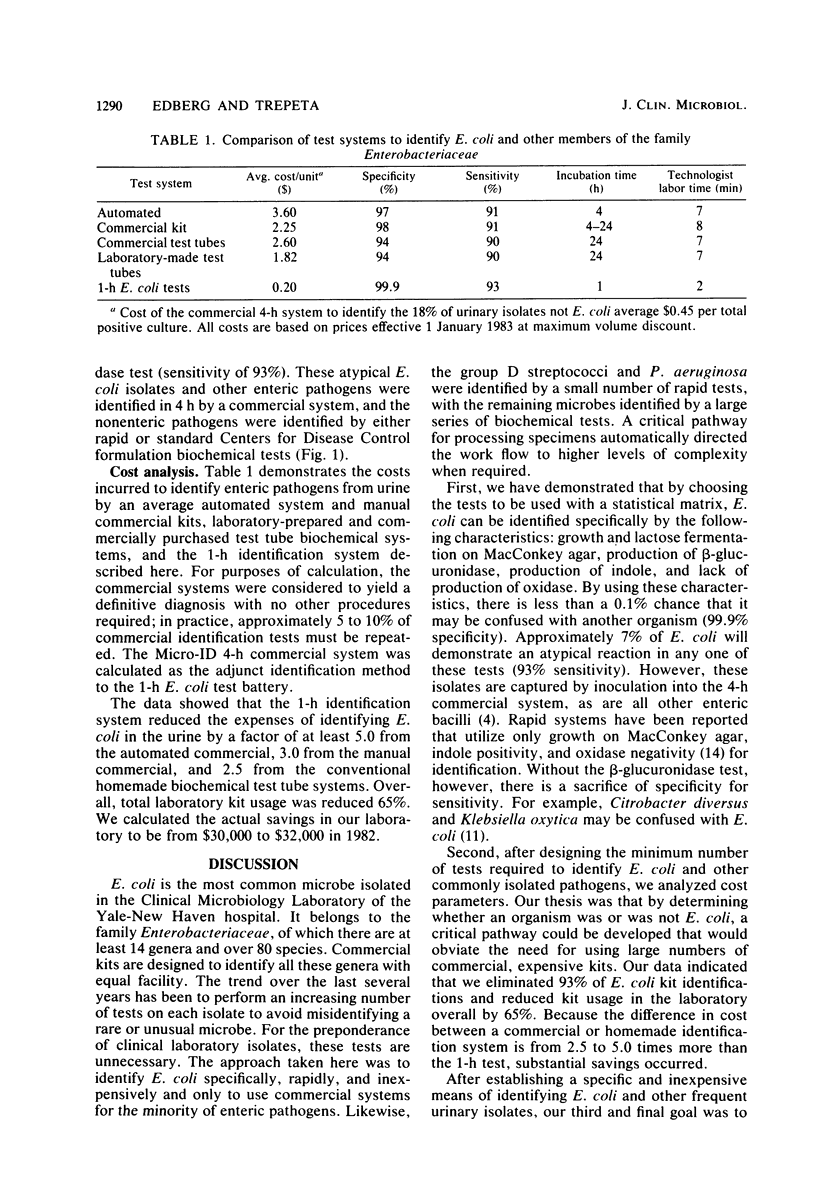
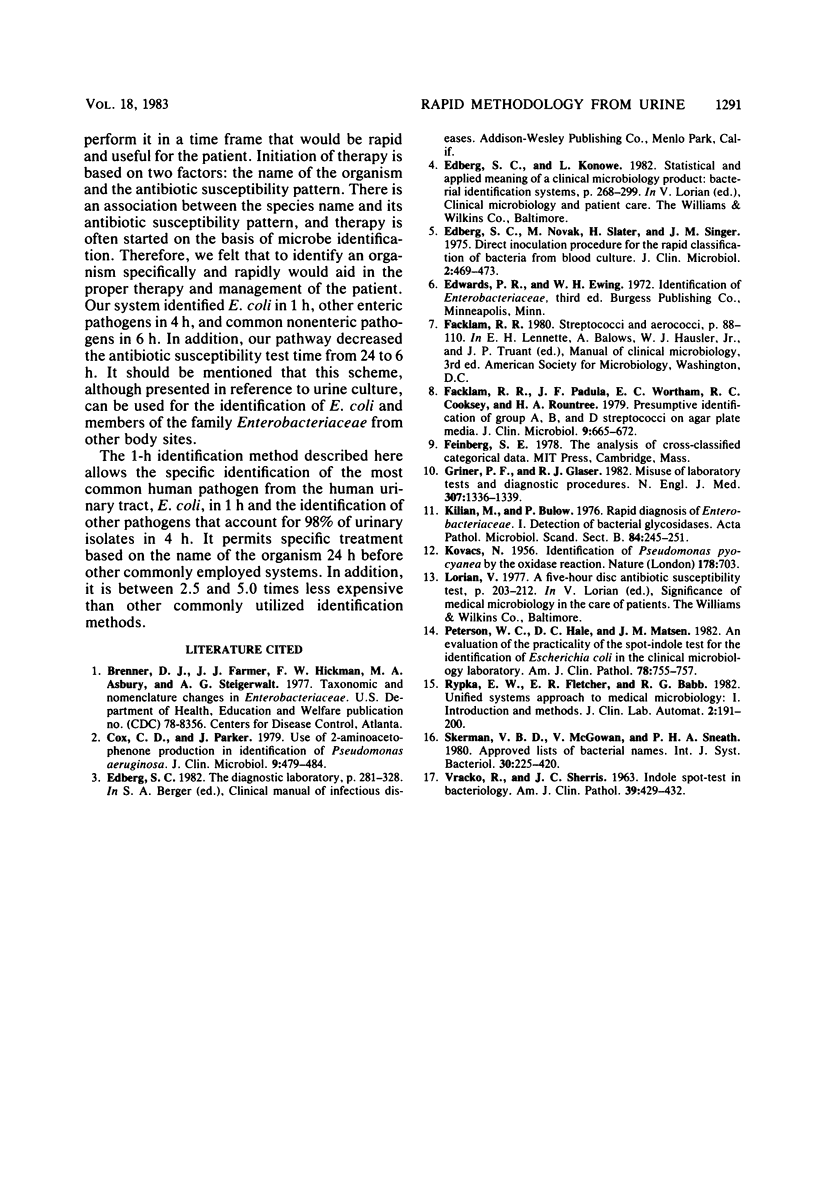
Selected References
These references are in PubMed. This may not be the complete list of references from this article.
- Cox C. D., Parker J. Use of 2-aminoacetophenone production in identification of Pseudomonas aeruginosa. J Clin Microbiol. 1979 Apr;9(4):479–484. doi: 10.1128/jcm.9.4.479-484.1979. [DOI] [PMC free article] [PubMed] [Google Scholar]
- Edberg S. C., Novak M., Slater H., Singer J. M. Direct inoculation procedure for the rapid classification of bacteria from blood culture. J Clin Microbiol. 1975 Dec;2(6):469–473. doi: 10.1128/jcm.2.6.469-473.1975. [DOI] [PMC free article] [PubMed] [Google Scholar]
- Facklam R. R., Padula J. F., Wortham E. C., Cooksey R. C., Rountree H. A. Presumptive identification of group A, B, and D streptococci on agar plate media. J Clin Microbiol. 1979 Jun;9(6):665–672. doi: 10.1128/jcm.9.6.665-672.1979. [DOI] [PMC free article] [PubMed] [Google Scholar]
- Griner P. F., Glaser R. J. Sounding boards. Misuse of laboratory tests and diagnostic procedures. N Engl J Med. 1982 Nov 18;307(21):1336–1339. doi: 10.1056/NEJM198211183072109. [DOI] [PubMed] [Google Scholar]
- KOVACS N. Identification of Pseudomonas pyocyanea by the oxidase reaction. Nature. 1956 Sep 29;178(4535):703–703. doi: 10.1038/178703a0. [DOI] [PubMed] [Google Scholar]
- Kilian M., Bülow P. Rapid diagnosis of Enterobacteriaceae. I. Detection of bacterial glycosidases. Acta Pathol Microbiol Scand B. 1976 Oct;84B(5):245–251. doi: 10.1111/j.1699-0463.1976.tb01933.x. [DOI] [PubMed] [Google Scholar]
- Peterson W. C., Hale D. C., Matsen J. M. An evaluation of the practicality of the spot-indole test for the identification of Escherichia coli in the clinical microbiology laboratory. Am J Clin Pathol. 1982 Nov;78(5):755–758. doi: 10.1093/ajcp/78.5.755. [DOI] [PubMed] [Google Scholar]


